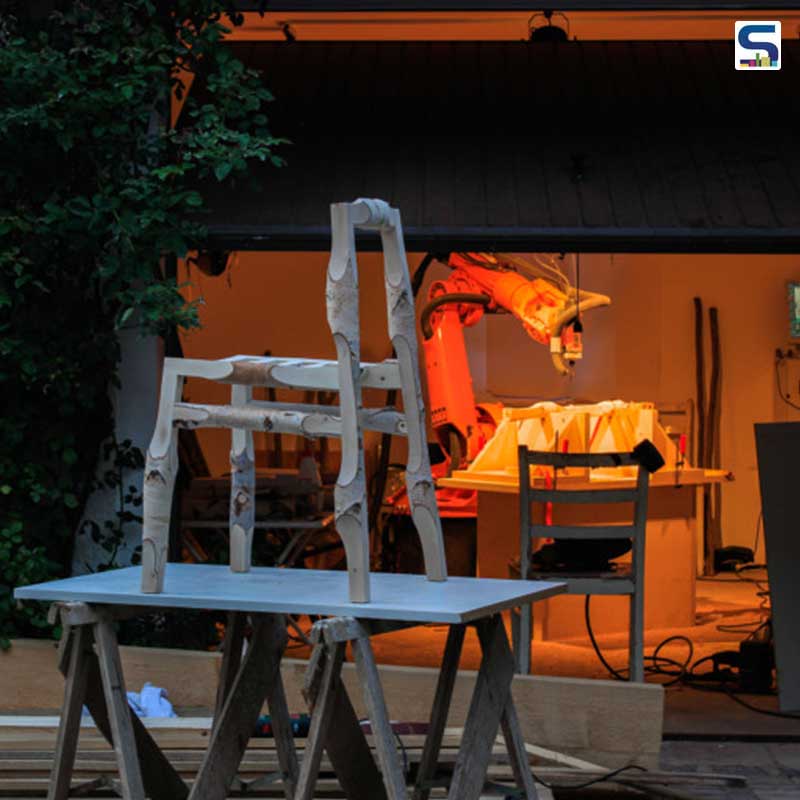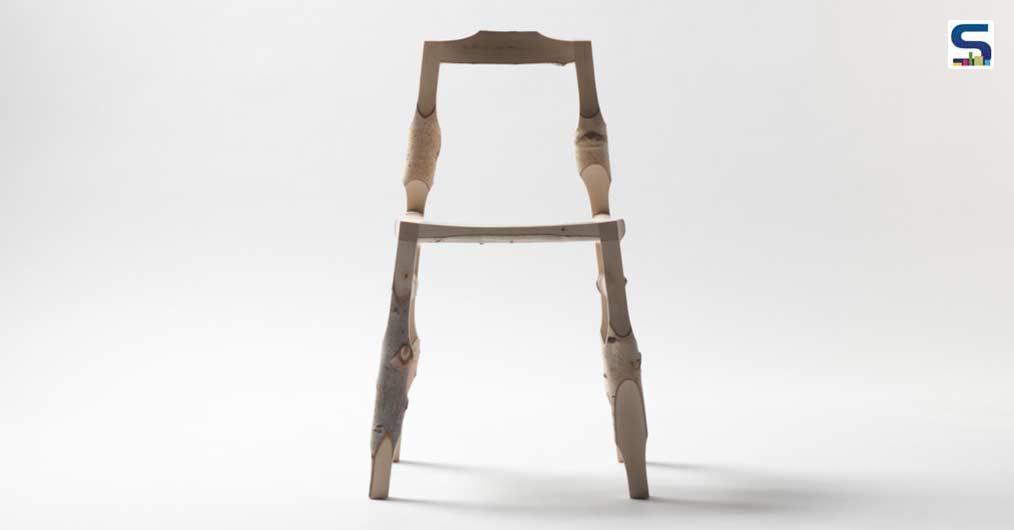
A case study of experimenting around leftover materials from the wood industry through an interconnection of 3D scanning, computational design and robotic manufacturing led to the inception of New Sources. Designed by product designer Matthias Gschwendtner, the Computational Log Chair is the first product of the New Sources series.

It was during Gschwendtner’s time in Rankam village of rural Bavaria where he had set up a temporary workshop in his parent’s garage to fix a broken 22-year-old kuka industrial robot. It was here where he turned to technology and algorithm to transform his wooden materials into a raw-looking seat, which would complement nature.

Raw birch branches are 3D-scanned. Thereon, they are virtually processed by algorithms to constantly recalculate all production data for each individual part of an object. Milled surfaces and edges encompass the skeleton of the chair. The raw branch surface of the chair in contrast to the edges beautifies the intersection between nature and technology. The birch branch acts as a natural ornament of the chair, thereby maintaining the original character of the material. The irregularity of the material makes the final product a unique piece and raises questions on the standardization of naturally grown materials with regards to mass consumption.
Gschwendtner told Design Boom: ‘the algorithm, specially developed for this project, analyzes the geometry of each scanned branch and places them into the right position in virtual space. Furthermore, all necessary production data gets calculated by the algorithm and sent to an industrial milling robot. Branches will be selected in advance using pattern recognition. Different forms fit different parts.’
Image and video credits: Matthias Gschwendtner